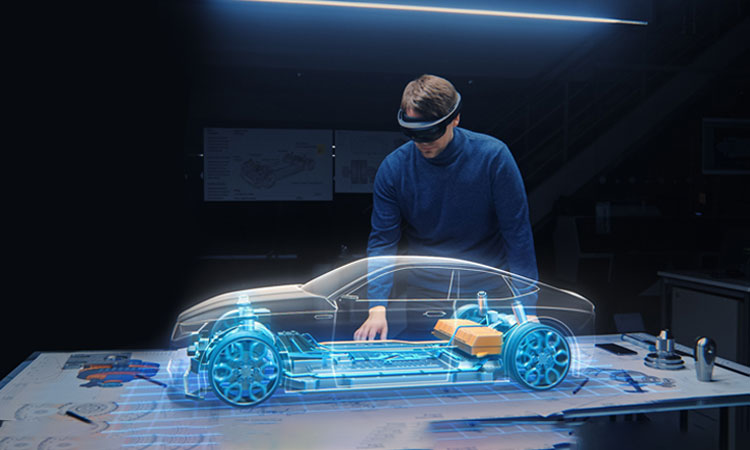The Dynamic World of Automotive: Innovations and Trends

The automotive industry is one of the most rapidly evolving sectors in the world. It is a field where cutting-edge technology meets design innovation, constantly pushing the boundaries of what’s possible. From the early days of the combustion engine to the electric revolution we are witnessing today, the pafikotamaba.org landscape has transformed in ways that continue to shape our daily lives and the environment around us.
A Glimpse into the Past: How Far We’ve Come
The history of the automotive industry is a fascinating journey of invention and progress. In the late 19th and early 20th centuries, vehicles were a luxury item, available only to the wealthy. However, with the advent of mass production, particularly Henry Ford’s assembly line, cars became accessible to the broader public. This democratization of transportation was a pivotal moment, setting the stage for the automotive boom that would follow.
Fast forward to today, and the industry is in the midst of another significant transformation. The internal combustion engine, which dominated the 20th century, is gradually giving way to electric and hybrid technologies. This shift is driven by a combination of environmental concerns, technological advancements, and changing consumer preferences.
The Rise of Electric Vehicles (EVs)
One of the most notable trends in the automotive industry is the rise of electric vehicles (EVs). What was once a niche market is now rapidly becoming mainstream. Governments around the world are setting ambitious targets for reducing carbon emissions, and EVs are seen as a crucial component of this strategy. Companies like Tesla, Nissan, and BMW have been at the forefront of this movement, developing vehicles that are not only environmentally friendly but also perform at a level comparable to traditional gasoline-powered cars.
But it’s not just about the vehicles themselves. The infrastructure supporting EVs is also expanding. Charging stations are becoming more prevalent, and advancements in battery technology are addressing concerns about range and charging times. As these issues are resolved, the adoption of EVs is expected to accelerate even further, cementing their place in the automotive future.
Autonomous Driving: The Future is Closer Than You Think
Another revolutionary development in the automotive sector is autonomous driving. The idea of cars that can drive themselves was once the stuff of science fiction, but today it is on the cusp of becoming reality. Companies like Google’s Waymo, Uber, and traditional automakers are investing heavily in developing self-driving technology.
Autonomous vehicles (AVs) promise to change the way we think about transportation. They have the potential to reduce traffic accidents, increase efficiency, and even reshape urban planning. Imagine a future where traffic jams are a thing of the past, and parking lots are no longer needed because your car can drop you off and pick you up autonomously. This is the kind of future that the automotive industry is working towards.
Sustainability in Automotive Manufacturing
Sustainability is not just about the vehicles themselves; it’s also about how they are made. The automotive industry is increasingly focused on reducing its environmental impact throughout the entire lifecycle of a vehicle, from production to disposal. This includes using sustainable materials, reducing waste in manufacturing processes, and designing cars that are easier to recycle at the end of their life.
For instance, many automotive manufacturers are exploring the use of lightweight materials such as carbon fiber and aluminum, which not only reduce the overall weight of the vehicle but also improve fuel efficiency. Additionally, there is a growing emphasis on the circular economy, where materials are reused and recycled rather than discarded. This approach not only benefits the environment but also helps companies reduce costs in the long term.
The Role of Technology in Shaping the Automotive Experience
Technology plays a pivotal role in shaping the modern automotive experience. Today’s vehicles are more connected than ever before, with features like infotainment systems, advanced driver-assistance systems (ADAS), and even in-car Wi-Fi becoming standard. These innovations are making driving safer, more enjoyable, and more convenient.
For example, ADAS technologies such as lane-keeping assistance, adaptive cruise control, and automatic emergency braking are designed to prevent accidents and reduce the severity of collisions. Meanwhile, infotainment systems allow drivers and passengers to stay connected and entertained on the go, transforming the car into a mobile hub for both work and leisure.
Conclusion: The Road Ahead
The automotive industry is at a crossroads, with exciting innovations on the horizon that promise to redefine the way we travel. Electric vehicles, autonomous driving, and sustainable manufacturing practices are just a few of the trends that are driving this change. As technology continues to advance, the future of the automotive world looks brighter than ever, with the potential to create a more sustainable, efficient, and enjoyable driving experience for everyone.
Whether you’re a car enthusiast or simply a commuter, there’s no denying that we are living in one of the most transformative periods in automotive history. The road ahead is full of possibilities, and the journey is just beginning.
